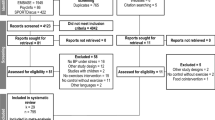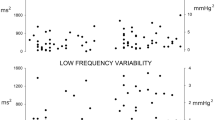Abstract
The therapeutic application of pulsed electromagnetic fields (PEMFs) can accelerate healing after bone fractures and also alleviate pain according to several studies. However, no objective criteria have been available to ensure appropriate magnetic field strength or type of electromagnetic field. Moreover, few studies so far have investigated the physical principles responsible for the impact of electromagnetic fields on the human body. Existing studies have shown that PEMFs influence cell activity, the autonomic nervous system and the blood flow. The aim of this study is to examine the instantaneous and short-term effects of a PEMF therapy and to measure the impact of different electromagnetic field strengths on a range of physiological parameters, especially the autonomic nervous systems, determined by heart rate variability (HRV) as well as their influence on subjects’ general feeling of well-being. The study comprised experimental, double-blind laboratory tests during which 32 healthy male adults (age: 38.4 ± 6.5 years) underwent four physical stress tests at standardised times followed by exposure to pulsed magnetic fields of varying intensity [HPM, High Performance magnetic field; Leotec; pulsed signal; mean intensity increase: zero (placebo), 0.005, 0.03 and 0.09 T/s]. Exposure to electromagnetic fields after standardised physical effort significantly affected the very low frequency power spectral components of HRV (VLF; an indicator for sympathetically controlled blood flow rhythms). Compared to placebo treatment, exposure to 0.005 T/s resulted in accelerated recovery after physical strain. Subjects with lower baseline VLF power recovered more quickly than subjects with higher VLF when exposed to higher magnetic field strengths. The application of electromagnetic fields had no effect on subjects’ general feeling of well-being. Once the magnetic field exposure was stopped, the described effects quickly subsided. PEMF exposure has a short-term dosage-dependent impact on healthy subjects. Exposure to PEMF for 20 min resulted in more rapid recovery of heart rate variability, especially in the very low frequency range after physical strain. The study also showed the moderating influence of the subjects’ constitutional VLF power on their response to PEMF treatment. These findings have since been replicated in a clinical study and should be taken into consideration when PEMF treatment is chosen.





Similar content being viewed by others
Notes
According to the Maxwell equation, we induced three different field strengths (E; mV/cm) and current densities (J; mA/mm2) in the tissue of our subjects: 0.005 T/s: E = 3.75, J = 0.0039; 0.03 T/s: E = 22.5, J = 0.0233 and 0.09 T/s: E = 67.5, J = 0.0700; To estimate the induced field strengths and current densities we used the properties of the medulla with a specific conductivity of 0.10375 S/m and a diameter of 3 cm. Furthermore, we assumed that the flux densities as well as the conductivity of the living tissue is homogeneous, which is not completely accurate for real tissue.
The height of the platform was adjusted to the size of each test person followed by a short test trial to get used to the physical stress test before starting the test protocol. Subjects showed an average heart rate of 155 beats per minute (bpm; range: 116–192 bpm).
HRV values are depending on the age and decline with aging (e.g. O’Brien et al. 1986; Moser et al., 1998; Umetani et al. 1998), but this is not important for a test protocol with repeated measurements (crossover design). In this study, age is not significantly associated with the reported dependent variables and their changes during exposure.
References
Bassett CA (1989) Fundamental and practical aspects of therapeutic uses of pulsed electromagnetic fields (PEMFs). Crit Rev Biomed Eng 17(5):451–529
Carney RM, Blumenthal JA, Freedland KE, Stein PK, Howells WB, Berkman LF, Watkins LL, Czajkowski SM, Hayano J, Domitrovich PP, Jaffe AS (2005) Low heart rate variability and the effect of depression on post-myocardial infarction mortality. Arch Intern Med 165(13):1486–1491
Cheing GL, Wan JW, Kai Lo S (2005) Ice and pulsed electromagnetic field to reduce pain and swelling after distal radius fractures. J Rehabil Med 37(6):372–377
De Mattei M, Caruso A, Traina GC, Pezzetti F, Baroni T, Sollazzo V (1999) Correlation between pulsed electromagnetic fields exposure time and cell proliferation increase in human osteosarcoma cell lines and human normal osteoblast cells in vitro. Bioelectromagnetics 20(3):177–182
Diniz P, Shomura K, Soejima K, Ito G (2002) Effects of pulsed electromagnetic field (PEMF) stimulation on bone tissue like formation are dependent on the maturation stages of the osteoblasts. Bioelectromagnetics 23(5):398–405
Dortch AB, Johnson MT (2006) Characterization of pulsed magnetic field therapy in a rat model for rheumatoid arthritis. Biomed Sci Instrum 42:302–307
Fassina L, Visai L, Benazzo F, Benedetti L, Calligaro A, De Angelis MG, Farina A, Maliardi V, Magenes G (2006) Effects of electromagnetic stimulation on calcified matrix production by SAOS-2 cells over a polyurethane porous scaffold. Tissue Eng 12(7):1985–1999
Fitzsimmons RJ, Ryaby JT, Magee FP, Baylink DJ (1994) Combined magnetic fields increased net calcium flux in bone cells. Calcif Tissue Int 55(5):376–380
Fleisher LA, Frank SM, Sessler DI, Cheng C, Matsukawa T, Vannier CA (1996) Thermoregulation and heart rate variability. Clin Sci 90:97–103
Gaykema RP, Goehler LE, Tilders FJ, Bol JG, McGorry M, Fleshner M, Maier SF, Watkins LR (1998) Bacterial endotoxin induces fos immunoreactivity in primary afferent neurons of the vagus nerve. Neuroimmunomodulation 5(5):234–240
Graham C, Sastre A, Cook M, Gerkovich M (2000) Nocturnal magnetic field exposure: gender-specific effects on heart rate variability and sleep. Clin Neurophysiol 111:1936–1941
Hadase M, Azuma A, Zen K, Asada S, Kawasaki T, Kamitani T, Kawasaki S, Sugihara H, Matsubara H (2004) Very low frequency power of heart rate variability is a powerful predictor of clinical prognosis in patients with congestive heart failure. Circ J 68(4):343–347
Heermeier K, Spanner M, Trager J, Gradinger R, Strauss PG, Kraus W, Schmidt J (1998) Effects of extremely low frequency electromagnetic field (EMF) on collagen type I mRNA expression and extracellular matrix synthesis of human osteoblastic cells. Bioelectromagnetics 19(4):222–231
Hobi V (1985) Basler Befindlichkeits-Skala. Weinheim: Beltz Test Gesellschaft
Icaro Cornaglia A, Casasco M, Riva F, Farina A, Fassina L, Visai L, Casasco A (2006) Stimulation of osteoblast growth by an electromagnetic field in a model of bone-like construct. Eur J Histochem 50(3):199–204
Ichioka S, Iwasaka M, Shibata M, Harii K, Kamiya A, Ueno S (1998) Biological effects of static magnetic fields on the microcirculatory blood flow in vivo: a preliminary report. Med-Biol-Eng-Comput 36(1):91–95
Kanai S, Taniguchi N, Kawamoto M, Endo H, Higashino H (2004) Effect of static magnetic field on pain associated with frozen shoulder. Pain-Clinic 16(2):173–179
Keen EN, Sloan AW (1958) Observations on the Harvard Step Test. J Appl Physiol 13:241–243
Kleinbaum K (1978) Applied regression analysis and other multivariable methods. Duxbury Press. North Scituate
Kuo, Terry BJ, Tsann Lin, Cheryl Yang CH, Chia-Lin Li, Chieh-Fu Chen, Pesus Chou (1999) Effect of aging on gender differences in neural control of heart rate. Am J Physiol 277 (Heart Circ Physiol 46):2233–2239
Lee JH, McLeod KJ (2000) Morphologic responses of osteoblast-like cells in onolayer culture to ELF electromagnetic fields. Bioelectromagnetics 21(2):129–136
Lyskov E, Kalezic N, Markov M, Mild KH, Thunberg J, Johansson H (2005) Low frequency therapeutic EMF differently influences experimental muscle pain in female and male subjects. Bioelectromagnetics 26(4):299–304
Markov MS, Colbert AP (2000) Magnetic and electromagnetic field therapy. J Back Muscular Rehabil 14:1–13
McKay JC, Prato FS, Thomas AW (2006) A literature review: The effects of magnetic field exposure on blood flow and blood vessels in the microvasculature. Bioelectromagnetics 28(2):81–98
Miksa M, Wu R, Zhou M, Wang P (2005) Sympathetic excitotoxicity in sepsis: pro-inflammatory priming of macrophages by norepinephrine. Front Biosci 10:2217–2229
Moser M, Gallasch E, Rafolt D, Jernej G, Kemp C, Moser-Kneffel E, Kenner T, Baevskij R, Funtowa I (1992) Cardiovascular monitoring in microgravity: The experiments PULSTRANS and SLEEP. In: Austrian Society for Aerospace Medicine (edts) Health from Space Research. Springer, Heidelberg, pp 167–189
Moser M, Lehofer M, Sedminek A, Lux M, Zapotoczky HG, Kenner T, Noordergraaf A (1994) Heart rate variability as a prognostic tool in cardiology. Circulation 90:1078–1082
Moser M, Lehofer M, Hoehn-Saric R, McLeod DR, Hildebrandt G, Steinbrenner B, Voica M, Liebmann P, Zapotoczky H (1998) Increased heart rate in depressed subjects in spite of unchanged autonomic balance? J Affect Disord 48:115–124
O’Brien IA, O’Hare P, Corrall RJM (1986) Heart rate variability in healthy subjects: effect of age and the derivation of normal ranges for tests of autonomic function. Br Heart J 55:348–354
Owegi R, Johnson MT (2006) Localized pulsed magnetic fields for tendonitis therapy. Biomed Sci Instrum 42:428–433
Pilla AA (2006) Mechanisms and therapeutic applications of time varying and static magnetic fields. In: Barnes F, Greenebaum B (eds) Handbook of biological effects of electromagnetic fields, 3rd edn. CRC Press, Boca Raton (in press)
Quittan M, Schuhfried O, Wiesinger GF, Fialka-Moser V (2000) Klinische Wirksamkeiten der Magnetfeldtherapie - eine Literaturübersicht. Acta Med Austriaca 27:61–68
Sait ML, Wood AW, Sadafi HA (1999) A study of heart rate and heart rate variability in human subjects exposed to occupational levels of 50 Hz circularly polarised magnetic fields. Med Eng Phys 21(5):361–369
Sastre A, Cook MR, Graham C (1998) Nocturnal exposure to intermittent 60 Hz magnetic fields alters human cardiac rhythm. Bioelectromagnetics 19(2):98–106
Shahabi S, Hassan ZM, Jazani NH, Ebtekar M (2006) Sympathetic nervous system plays an important role in the relationship between immune mediated diseases. Med Hypotheses 67(4):900–903
Shupak NM, McKay JC, Nielson WR, Rollman GB, Prato FS, Thomas AW (2006) Exposure to a specific pulsed low-frequency magnetic field: a double-blind placebo-controlled study of effects on pain ratings in rheumatoid arthritis and fibromyalgia patients. Pain Res Manag 11(2):85–90
Stepansky R, Jahn O, Windischbauer G, Zeitlhofer J (2000) Elektromagnetische Felder - Auswirkungen auf die Gesundheit. AMA Acta Med Austr 27(3):69–77
Tabor Z, Michalski J, Rokita E (2004) Influence of 50 Hz magnetic field on human heart rate variability: linear and nonlinear analysis. Bioelectromagnetics 25:474–480
Task Force of the ESC, NASPE (1996) Heart rate variability. Standards of measurement, physiological interpretation, and clinical use (Task Force of the European Society of Cardiology and the North American Society of Pacing and Electrophysiology). Eur Heart J 17:354–381
Taylor JA, Carr DL, Myers CW, Eckberg DL (1998) Mechanisms underlying very-low-frequency RR-interval oscillations in humans. Circulation 98:547–555
Umetani K, Singer DH, McCraty R, Atkinson M (1998) Twenty-four hour time domain heart rate variability and heart rate: relations to age and gender over nine decades. J Am Coll Cardiol 31:593–601
Yuge L, Okubo A, Miyashita T, Kumagai T, Nikawa T, Takeda S, Kanno M, Urabe Y, Sugiyama M, Kataoka K (2003) Physical stress by magnetic force accelerates differentiation of human osteoblasts. Biochem Biophys Res Commun 311(1):32–38
Author information
Authors and Affiliations
Corresponding author
Rights and permissions
About this article
Cite this article
Grote, V., Lackner, H., Kelz, C. et al. Short-term effects of pulsed electromagnetic fields after physical exercise are dependent on autonomic tone before exposure. Eur J Appl Physiol 101, 495–502 (2007). https://doi.org/10.1007/s00421-007-0520-x
Accepted:
Published:
Issue Date:
DOI: https://doi.org/10.1007/s00421-007-0520-x




